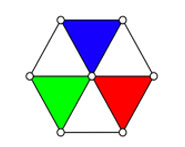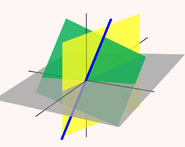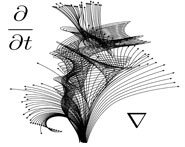


 تاريخ الرياضيات
تاريخ الرياضيات
 الرياضيات في الحضارات المختلفة
الرياضيات في الحضارات المختلفة 
 الرياضيات المتقطعة
الرياضيات المتقطعة
 الجبر
الجبر
 الهندسة
الهندسة 
 المعادلات التفاضلية و التكاملية
المعادلات التفاضلية و التكاملية 
 التحليل
التحليل
 علماء الرياضيات
علماء الرياضيات |
Read More
Date: 13-1-2022
Date: 31-12-2021
Date: 2-1-2022
|
The term "continuum" has (at least) two distinct technical meanings in mathematics.
The first is a compact connected metric space (Kuratowski 1968; Lewis 1983, pp. 361-394; Nadler 1992; Prajs and Charatonik).
The second is the nondenumerable set of real numbers, denoted  . The continuum
. The continuum  satisfies
satisfies
 |
(1) |
and
 |
(2) |
where  is aleph0 (Aleph-0) and
is aleph0 (Aleph-0) and  is a positive integer. It is also true that
is a positive integer. It is also true that
 |
(3) |
for  . However,
. However,
 |
(4) |
is a set larger than the continuum. Paradoxically, there are exactly as many points  on a line (or line segment) as in a plane, a three-dimensional space, or finite hyperspace, since all these sets can be put into a one-to-one correspondence with each other.
on a line (or line segment) as in a plane, a three-dimensional space, or finite hyperspace, since all these sets can be put into a one-to-one correspondence with each other.
The continuum hypothesis, first proposed by Georg Cantor, holds that the cardinal number of the continuum is the same as that of aleph1. The surprising truth is that this proposition is undecidable, since neither it nor its converse contradicts the tenets of set theory.
REFERENCES:
Kuratowski, K. Topology, Vol. 2. New York: Academic Press, 1968.
Lewis, W. "Continuum Theory Problems." Topology Proc. 8, 361-394, 1983.
Nadler, S. B. Jr. Continuum Theory. New York: Dekker, 1992.
Prajs, J. R. and Charatonik, W. J. (Eds.). "Open Problems in Continuum Theory." http://web.umr.edu/~continua/.



|
|
|
|
للعاملين في الليل.. حيلة صحية تجنبكم خطر هذا النوع من العمل
|
|
|
|
|
|
|
"ناسا" تحتفي برائد الفضاء السوفياتي يوري غاغارين
|
|
|
|
|
|
|
ملاكات العتبة العباسية المقدسة تُنهي أعمال غسل حرم مرقد أبي الفضل العباس (عليه السلام) وفرشه
|
|
|